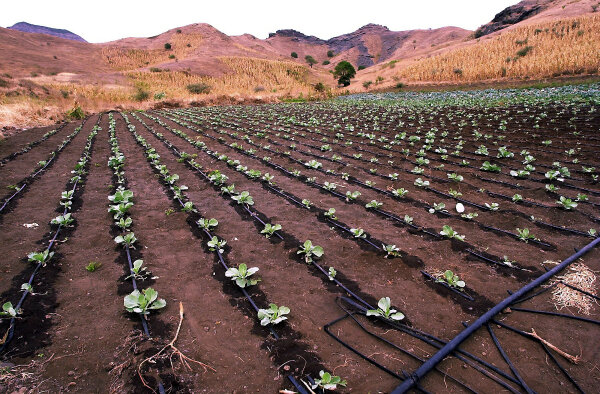
1. GETTING LAND READY.
The first take to any crop growing farmer before planting is doing a soil test and getting the nutrient content right, this is one of the key factors mostly to farmers who intend to grow Cabbages. Soil analysis is often done 'charge free' by your fertilizer supplier or at small fee. Cabbage can be grown in slightly acidic soil, but it’s always better to try to get as close to a water pH level of 6,5 to 6,8 as possible. If your soil analysis calculates pH on the potassium chloride (KCl) basis, add one point to get the approximate water pH. In other words, a KCl pH of 5,5 would be close to a water pH of 6,5. A pH on the low side is likely to produce a molybdenum deficiency, which makes phosphate less available to the plant. In this case, work very finely ground lime into the soil. Do this well in advance of planting the crop, as the soil takes time to stabilize. Most soils are high in magnesium which should preferably be in balance with calcium. So, like most of our farmers, you will probably need calcite lime.
If you are in an area with a low level of soil magnesium, you should use dolomite lime
(Kindly consult agronomists or fertilizer adviser on limes). Cattle and poultry manure benefit microbial life and soil structure, and are excellent for stimulating plant growth.
2.HOW TO WORK THE SOIL

After the soil testing, follows the land preparation, the more land is tilled, the faster its structure and organic content breaks down. Rule is to till only as much as necessary to get the job done. Small clods and crumbly soil improve water penetration and be less likely to crust after heavy rain. For the highest yield, space the rows about 60cm apart, leaving the odd row out for the tractor operating the spray rig. This rows can be in form of shallow ridges or on flat ground. We advice use raised beds 1,6m to 1,8m apart (from center to center) if there is a drainage problem; these reduce the chance of standing water damaging the roots. The beds should be angled to remove excess water from the land after heavy rain. Where the soil is well drained, raised beds will reduce yield. This is because the furrows between beds take up too much room, reducing the plant population.
3.IRRIGATION METHOD

Furrow irrigation is suitable where there is sufficient water. Although this method may seem rather primitive, it requires a great deal of skill. Getting the correct fall and distance between feeder furrows to suit the soil type takes experience. Nevertheless, you can get excellent results with lower input costs, that's through modern Drip Irrigation method. The easiest irrigation method, which is very effective and precise, is the Drip irrigation. we welcome all to our trusted company, for designed drip installation. If you are using pipes and sprinklers, opt for the solid set system, where you simply open valves as you need to. All farmers need to cut down on labor as much as possible.
For customized drip irrigation, don't hesitate to get in touch with us through; +254746300055 / +254738690937 / sales@dripsol.com.



No comments:
Post a Comment